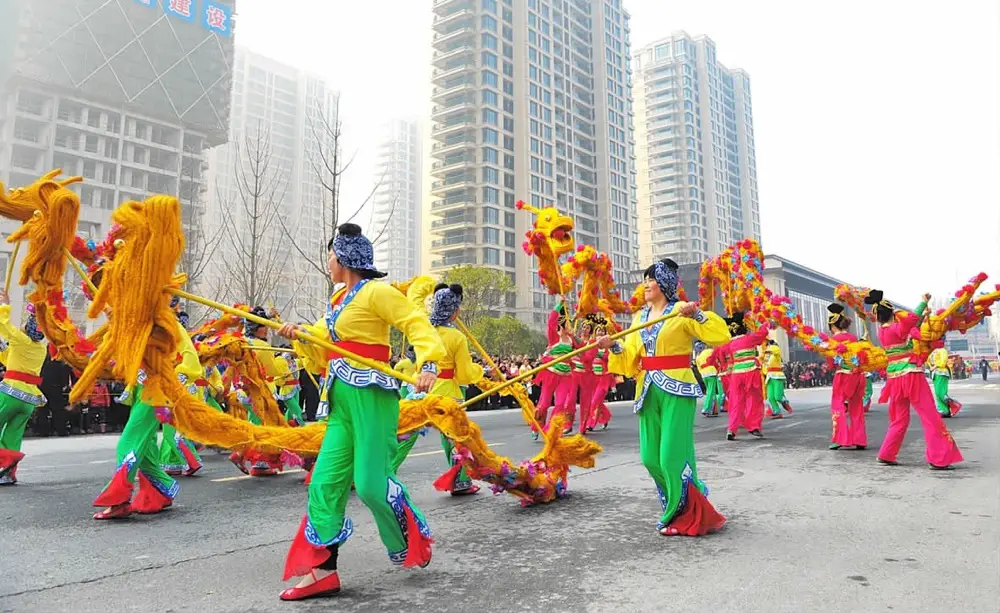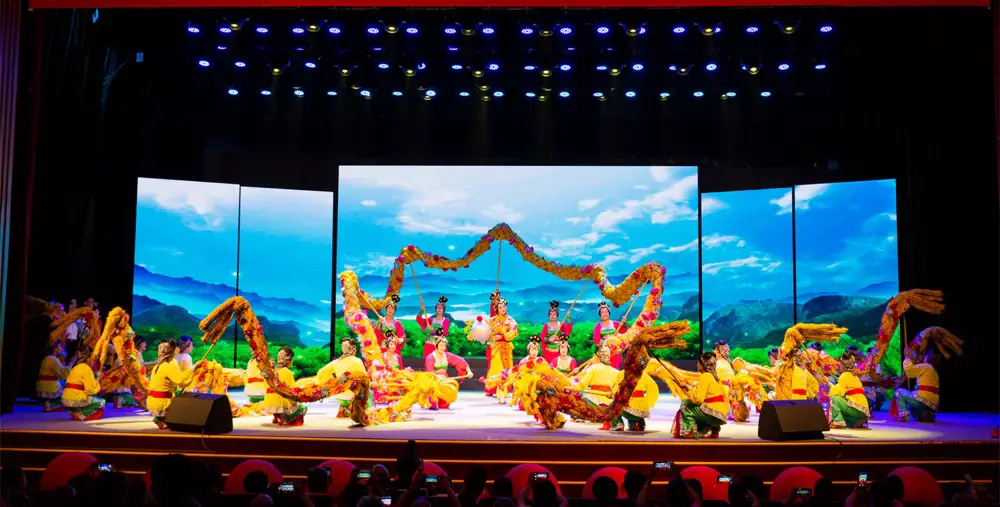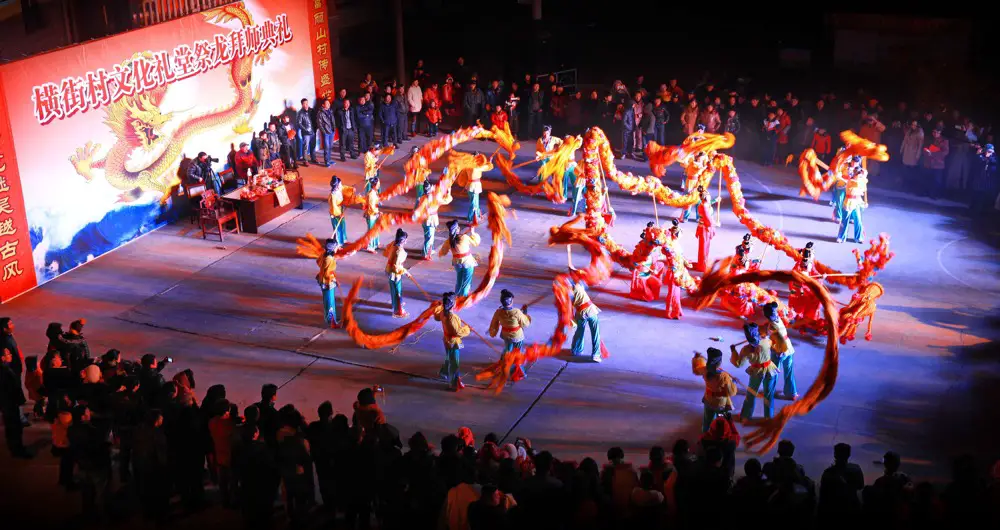In Hengjie Village, Jincheng Street, Lin’an City, there exists an ancient traditional activity known as the Grass Dragon Dance. This rich and distinctive folk art form is deeply rooted in the fertile soil of Wu-Yue culture, having undergone millennia of sedimentation and inheritance, yet still exuding vibrant vitality today.
Grass Dragon of Hengjie, called Hengjie Caolong in Chinese. Behind the name “Grass Dragon of Hengjie” lies profound historical and cultural significance. Historical records trace this dragon dance back to the late Tang Dynasty and Five Dynasties and Ten Kingdoms period, during which the beloved consort of the King of Wuyue, Lady Dai, hailed from Hengjie. Legend has it that the Grass Dragon Dance was originally bestowed upon her hometown by Lady Dai herself, lending an air of mystery and legend to this activity.

Through the course of history, the Grass Dragon of Hengjie has evolved from straw dragons to silk dragons, and eventually to bamboo dragons. Each form of the dragon bears the memory and craftsmanship of its era, reflecting people’s reverence and admiration for this mystical creature. The straw dragon is robust and lively, the silk dragon delicate and elegant, while the bamboo dragon is exquisite and sturdy. These variations not only denote changes in materials but also signify progress in craftsmanship and cultural accumulation.
The performance of the Grass Dragon Dance is a form of folk dance, with each movement brimming with strength and beauty. Dancers hold the dragon’s body and, following the rhythm of the music, execute a series of complex and exquisite movements such as walking, jumping, weaving, running, flipping, rolling, threading, wandering, and sweeping. Through their interpretation, the dragon seems to truly soar in the sky, at times tumbling and leaping, at others lowering its head and plunging, vividly portraying the majesty and agility of the dragon.
Originally, the dance comprised 18 sections, each with unique themes and choreography. However, due to historical changes and the passing of some elder artists, some dance movements have been lost. Fortunately, in recent years, with the enhancement of cultural preservation awareness, villagers have begun efforts to restore and inherit this dance, and it has now been restored to 16 sections. Each dance section embodies profound cultural connotations, offering a vivid interpretation of Wu-Yue culture.

In addition to the dance itself, the process of dancing the Grass Dragon also includes many specific rituals and ceremonies. The most representative of these are the “Qishan Moon” and “Manshan Moon.” “Qishan Moon” serves as the prelude to the Grass Dragon Dance, during which villagers set up incense tables to “receive the dragon,” using dragon-calling chants to welcome the dragon to the village, symbolizing blessings, ancestral worship, and celebration of bountiful harvests. “Manshan Moon” is the climax of the Grass Dragon Dance. Set to ancient music and accompanied by drums, dragon dancers unleash their movements with abandon, improvising various graceful poses. At this moment, the entire village is immersed in a joyful and harmonious atmosphere.
In recent years, with the increasing attention and support from governments at all levels for the protection of intangible cultural heritage, the Grass Dragon of Hengjie has enjoyed better inheritance and development. It has not only been listed in the intangible cultural heritage catalogs of Lin’an City, Hangzhou City, and even Zhejiang Province but has also won numerous honors such as gold awards in various cultural activities. These honors not only affirm the skills of the dancers but also recognize and praise the traditional cultural form of the Grass Dragon of Hengjie.

Today, the Grass Dragon of Hengjie has become an important calling card for local culture. Every year, the dragon dance activities attract a large number of tourists to come and watch and experience, bringing popularity and economic benefits to the village. Meanwhile, the Grass Dragon of Hengjie has also become an important driving force for the construction of new rural areas and the increase of farmers’ income. Through participation in dragon dance activities and the development of related cultural industries, villagers not only increase their sources of income but also enhance their sense of cultural identity and pride.
The Grass Dragon of Hengjie is not only a folk art form with exquisite skills but also a continuation and inheritance of culture. It witnesses the prosperity and development of Wu-Yue culture and embodies people’s aspirations for a better life. In the days to come, we look forward to the continued inheritance of the Grass Dragon of Hengjie, showcasing its unique charm and value to more people.
Source: Hangzhou Learning Platform, “Historical and Cultural City | ‘Zhejiang Intangible Cultural Heritage’ · Hangzhou Lin’an Hengjie Grass Dragon”